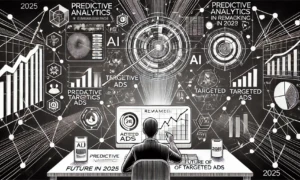In 2025, dynamic ads are at the forefront of digital marketing, revolutionizing how brands engage with potential customers. By delivering hyper-personalized content tailored to individual user behavior, dynamic ads have become one of the most effective tools for remarketing. Whether it’s reminding a user of a product they abandoned or showcasing relevant recommendations, dynamic ads ensure your brand stays relevant and top-of-mind.
What are Dynamic Ads?
Dynamic ads are automatically generated advertisements that adapt their content based on user interactions with your website, app, or other platforms. These ads dynamically pull data—like product images, prices, and descriptions—to create tailored messages for each user. They eliminate the one-size-fits-all approach, offering a unique experience for every viewer.
For example:
- A user who browses a pair of sneakers on your e-commerce site might later see a Facebook ad featuring those sneakers along with similar styles.
- A travel enthusiast searching for flights to Paris could see a Google ad promoting discounted airfare and hotels in Paris.
Why Dynamic Ads Matter in 2025
- Personalization at Scale With advancements in AI, dynamic ads can deliver highly personalized experiences to millions of users simultaneously.
- Improved Conversion Rates Personalized content increases user engagement and drives higher conversion rates compared to generic ads.
- Efficient Resource Utilization Dynamic ads automate ad creation, saving time and resources while maintaining relevance.
- Cross-Platform Reach Dynamic ads integrate seamlessly across platforms like Google, Facebook, Instagram, and LinkedIn, ensuring consistent messaging.
Latest Trends in Dynamic Ads
- AI-Enhanced Ad Optimization Tools like Meta Advantage+ and Google Performance Max use AI to test different ad creatives and optimize campaigns in real-time.
- Video Dynamic Ads With the growing demand for video content, platforms now support dynamic video ads that adapt visuals and messaging to user behavior.
- Voice and Visual Search Integration Dynamic ads are now leveraging voice search data from smart devices and visual search inputs from apps like Pinterest to refine targeting.
- Interactive Dynamic Ads Interactive elements, such as swipeable carousels or AR features, make dynamic ads more engaging and immersive.
Case Study: Dynamic Ads Boosting E-Commerce Sales
Brand: LuxeDecor, an online furniture retailer.
Challenge: High cart abandonment rates and low repeat customer engagement.
Dynamic Ads Strategy:
- Implemented dynamic remarketing ads on Google and Meta to target users who abandoned carts.
- Used AI to showcase relevant product recommendations based on browsing history.
- Created dynamic video ads on YouTube featuring top-selling furniture in action, appealing to both new and returning users.
Results:
- A 40% reduction in cart abandonment rates within six months.
- A 25% increase in repeat purchases from returning customers.
- A 3x ROI on dynamic ad campaigns compared to static ads.
How to Implement Dynamic Ads in Your Marketing Strategy
- Choose the Right Platforms Platforms like Google Ads, Meta Ads Manager, and LinkedIn Ads offer robust support for dynamic ad campaigns.
- Leverage AI Tools Use tools like AdRoll, Criteo, and Dynamic Yield to automate ad personalization and placement.
- Integrate Dynamic Creative Optimization (DCO) Platforms with DCO capabilities allow you to test multiple ad variations and automatically optimize for the best-performing ones.
- Focus on Data Accuracy Ensure your product feed or data sources are up-to-date to avoid displaying incorrect information, like outdated prices or unavailable products.
- Monitor and Optimize Use analytics tools to track performance metrics such as click-through rates (CTR), conversion rates, and return on ad spend (ROAS). Adjust campaigns based on insights.
The Future of Dynamic Ads
- AR and VR Integration Dynamic ads will incorporate augmented reality (AR) and virtual reality (VR) to create immersive shopping experiences. For instance, users could visualize furniture in their homes via AR-enabled ads.
- Hyper-Localized Targeting Ads will dynamically adjust based on user location, showing region-specific offers and store details.
- Sustainability Messaging Brands will use dynamic ads to highlight eco-friendly practices, showcasing relevant certifications and impact metrics to conscious consumers.
- Real-Time Personalization AI advancements will enable ads to adapt in real-time, considering factors like weather, events, or even the user’s current mood based on interaction data.
Conclusion
Dynamic ads are redefining how brands connect with consumers in 2025. By delivering the right message at the right time on the right platform, these ads ensure maximum relevance and engagement. For businesses aiming to stay competitive, investing in dynamic ad strategies is no longer optional—it’s essential. Whether you’re an e-commerce giant or a niche service provider, dynamic ads offer unparalleled opportunities to personalize at scale and drive meaningful conversions.


